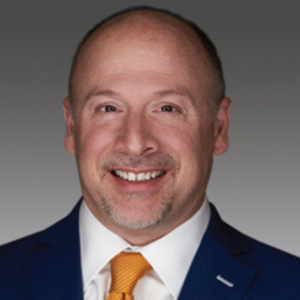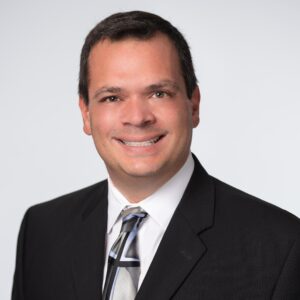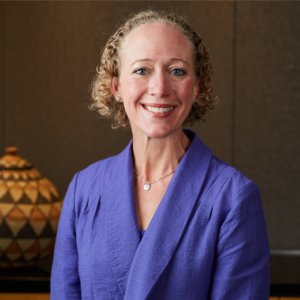Cleanliness Is Next to Deficiency-Free
| BY JUDY GROSS, RN-C, CDONA/LTC, RAC-C |
| Cleanliness is next to deficiency-free This former DON recommends giving your housekeeping practices a thorough checkup |
| Cleanliness is next to godliness” is a motto we’ve heard throughout the ages from parents, grandparents, and other grown-ups. “Wash your hands before you eat,” “wash your hands after going to the bathroom,” and “don’t use things that have fallen on the floor” are all directives we’ve heard before, too. These time-tested guidelines are as good as any in maintaining the cleanliness of long-term care settings in their constant efforts to maintain regulatory compliance and decrease infections. And in the midst of the flu season, adopting good cleaning practices assumes even greater importance. Although there are many facets to this, education of all staff members on the concept of keeping “clean” separate from “dirty” is a good start. This education should involve members of all departments, as well as residents and families. If this is kept in mind when decisions are made as to when to clean, how to clean, and who is to clean, it helps keep the process simple and clear-cut. Education of staff members can be made interesting-for example, using quiz show or game formats can help make learning fun. Unit-to-unit competitions based on respective infection rates or reduced survey deficiencies can trigger staff interest in obtaining what should be routine information. But what of those “many facets” I mentioned? Maintaining facility cleanliness is actually a comprehensive task. Start with the importance of changing cleaning solutions frequently to decrease the opportunity of spreading possible contaminants. Use of disposable cleaning cloths is a possibility, but it must be evaluated for cost-effectiveness. Disposable cleaning items and/or daily-used chemicals must be secured at all times to prevent injury to residents and visitors. As you know, this is addressed during the survey process, and a facility will avoid unnecessary citations if these items are controlled and secured as a matter of routine practice. Although the floor, tabletops, dresser tops, windowsills, etc., are surfaces normally cleaned by the environmental staff, extra consideration should be given to other areas of the residents’ environment. As a guideline to identifying those sometimes “forgotten” areas, observe residents’ day-to-day functions. What do residents touch, for example, after using the restroom? Remember, the handle of the cane, the handle grips of the walker, or the arms of the wheelchair are the most common items that residents touch before washing their hands. The grab bars located beside the commode and on the wall are frequently used and often omitted in cleaning the bathroom. The call cord or call device in the bathroom is also used frequently, but how is it cleaned? A similar question applies to the commode flusher and the doorknobs. The edge of the sink needs extra attention, as residents often use this to assist themselves in coming to a standing position to wash their hands. If a bedside commode is used, then extra cleaning of its armrests and side rails may be needed post-toileting. Also, do residents have cloth towels for drying their hands after handwashing, or are disposable towels available and are residents encouraged to use them? Do residents keep washcloths at the bedside to wipe off their hands superficially instead of being guided toward proper and thorough cleaning of hands? How does a resident clean his or her hands after coughing or sneezing? Are tissues available and within easy reach for residents, and is the waste receptacle easily accessible for those tissues to be discarded? Also in the resident room, items such as bedside phones, remote control devices, lamp switches, call cord activation devices, and electric bed controls can be overlooked during cleaning. Let’s look at the dining area. Dietary staff or those serving residents in a dining room setting can assist in keeping contamination to a minimum. Are residents offered the opportunity to clean their hands before being served? Are hand gels available for resident use? If pitchers are available on tables for additional beverages, how are these handled? Are residents helping themselves after having just coughed or sneezed into their hands? Are the arms of dining room chairs cleaned after each meal? Do residents frequently help each other during the dining process? Are cloth napkins or disposable napkins used? If cloth napkins are used, how are they handled after the meal-perhaps in a manner to make possible contaminants airborne? Are cloth tablecloths cleaned frequently? How do staff members assisting with meal service clean their hands if they inadvertently touch a resident? Are hand gel and handwashing areas available to them for convenient use? Remember, surveyors need only to observe the practices followed by staff and residents during the dining process to issue possible citations for infection control deficiencies. Public areas can be a concern for cleaning. In trying to provide a homelike atmosphere, for example, furniture is often upholstered in the style found in our homes. If furniture is covered with a protective material, is it cracked or torn? How and when are these items cleaned? Can decorative material be placed on the arms of the chairs and couches that can withstand frequent cleaning? Floorcoverings can harbor germs and increase odors; therefore, they need to be cleaned frequently with appropriate products that address potential contaminants that live and grow in carpeting and minute cracks in tiled floor. Don’t forget the remote controls in the general lounges and activity areas, as well. Devices such as these that are available for resident and visitor use add additional possibilities for contamination. How frequently are the snack machines cleaned-not just the glass of the machines, but the selection devices that are touched by numerous people? Microwaves and refrigerators all have handles and buttons that need extra cleaning when accessible to residents, staff, and visitors in areas outside the dietary department. Activity and therapy staff members have their own cleaning concerns-for example, how frequently are the balls, scissors, and all other equipment used in daily activity events cleaned? If computer keyboards are generally accessible, specialized cleaners for these and other electronic equipment can be used; they are available at most electronics stores. In the therapy area, who cleans the parallel bars, the handrail by the steps, and other equipment used by licensed therapists and when are they cleaned? For that matter, is handwashing included in the task training for the resident in relearning self-care skills? Laundry services’ cleaning practices can contribute to major survey citations if not appropriate. For example, neglecting the areas behind the washers and dryers can not only lead to cleanliness citations, but can pose a fire threat. Removing excess lint from equipment routinely is a must. Procedures for handling soiled laundry in a manner that decreases the threat of spreading infection are vital. Impermeable aprons or gowns are a must for staff to prevent contamination of their clothing. Clean linen cart covers should be free from stains and soil, and soiled linen carts themselves should be on a routine cleaning schedule to decrease the potential for cross-contamination and odor. Maintenance staff can contribute to survey compliance by inspecting the building for larger areas that may need cleaning. Floors, handrails, doors, walls, and all other building surfaces must be kept clean and in good repair. Outside care of the building can include cleaning the outside fixtures of doors, windows, and other building areas that receive heavy traffic use and function. How frequently are the door handles cleaned, both inside and out? Families can be included in the process of maintaining a clean facility. Discuss at family council meetings observations made by family members and visitors to determine how the community views the facility’s cleanliness. Input from family members will often reflect how surveyors evaluate building cleanliness. Requesting suggestions from family members about this issue can decrease their concerns and aid in heading off potential complaints to the state survey agency. Families can also assist the facility during infection outbreaks in maintaining a controlled visitation practice. To assist families with this, newsletters can explain signs and symptoms of illnesses that may restrict access to residents and therefore encourage families to limit visits in these cases. In sum, everyone in the facility can take pride in maintaining building cleanliness. The more involvement each staff member, family member, and resident has in observing and addressing potential problem areas, the better for everyone. Keeping everyone continually informed of risks and sound practices will enhance knowledge of what is expected of those who live and work there, and will go a long way toward determining success in regulatory compliance. Judy Gross, RN-C, CDONA/LTC, RAC-C, is a consultant with LBK Health Care, Inc., Dayton, Ohio. For further information, phone (937) 296-1550 or visit www.lbkhealthcare.com. To send your comments to the author and editors, e-mail gross0106@nursinghomesmagazine.com. To order reprints in quantities of 100 or more, please call (866) 377-6454. |
I Advance Senior Care is the industry-leading source for practical, in-depth, business-building, and resident care information for owners, executives, administrators, and directors of nursing at assisted living communities, skilled nursing facilities, post-acute facilities, and continuing care retirement communities. The I Advance Senior Care editorial team and industry experts provide market analysis, strategic direction, policy commentary, clinical best-practices, business management, and technology breakthroughs.
I Advance Senior Care is part of the Institute for the Advancement of Senior Care and published by Plain-English Health Care.
Related Articles
Topics: Articles , Facility management , Operations , Regulatory Compliance











